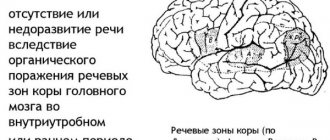Among the variety of speech defects in children and adults, the most common is a violation of sound pronunciation. The most common defects in the pronunciation of sonorant sounds, such as [р], [рь]. Violations in the pronunciation of sounds can be omission, replacement, distortion and confusion. The correction process occurs in stages and depends on the form of the disorder. A speech therapist will help identify the form of the defect. When examining speech, the child will be asked to repeat words from the speech therapist. A hearing specialist will be able to determine the form of rhotacism and an individual correction plan.
Exercises and techniques for making the sound R in children
Exercise “Repeat after me.” Invite your child to pick up a mirror, look at his tongue and “growl” like a tiger. The vibration of the front of the tongue should be monitored. It is important to prevent the formation of a throaty pronunciation of the sound. In the case of using the imitative method, parents will be helped by video recordings of speech therapy sessions, which are saturated on the Internet. The reasons why a full-fledged sound may not be obtained are the weakness of the air stream and the incorrect position of the tongue in the mouth. In this case, it is necessary to introduce exercises for the formation of an air stream and complexes of articulatory gymnastics for the upper lingual sound patterns. Invite your child to do the “sail” exercise - the tongue rests behind the upper teeth, the mouth smiles. Exercise "horse" - clicking the tongue without moving the lower jaw. Exercise “fungus” - sucking a wide tongue to the hard palate, holding for 5 seconds. To form a directed air stream, exercises with a harmonica, inflating balloons, blowing a ball of cotton wool off the table, water games in the bathroom “inflate the sails” (with a toy boat) are suitable.
Exercise "Machine gun". Invite your child to “growl” with his mouth closed. If he manages to pronounce the correct, non-throat sound [r], then it is possible to form a full-fledged way of life. At the same time, a dull growl is heard. Ask your child to make the sound by gradually opening his mouth. Make sure that the tongue is placed behind the upper teeth, not the lower ones. The main difficulty will be to form the upper position of the tongue. The same articulation gymnastics will come to the rescue.
Successful sound production is not the final stage of work. The resulting success should be consolidated. First, the sound is fixed in a free, rolling growl, then in syllables, words and phrases. After fixing the hard version, you can move on to working on the soft sound [рь], since it requires more subtle muscle movements. Work on the soft version also begins with the production of an isolated “soft growl”, then the sound is consolidated in free speech.
Setting the sound [r] during replacement (parorotacism). In this case, the sound [p] is replaced by simpler sounds that are accessible to the child: [v], [l]. Such a defect is clearly distinguishable by ear not only by specialists, but also by other people. Parents can easily identify this form of violation. As usual, the method of work in this case does not differ from staging when passing sound. Since substitution and omission are simple forms of violation. The production begins with the formation of a sound pattern and the formation of an air stream. In addition, you can use exercises for hissing sound groups: “cup”, “swing”, “painter”. Gradually the formed sound [p] will displace the sound it is replacing and will appear in speech. The next stages of work will include fixing the sound and introducing it into speech.
Differentiation of sounds P and Pb, common pronunciation defects
- The sound is a lingual-alveolar trembling hard consonant sound.
- The sound is a trembling soft consonant sound, differs from the raised position of the back of the tongue and the displacement of the tip of the tongue from the alveoli forward to the upper incisors.
To learn how to pronounce a sound correctly, the mouth must be slightly open, the teeth should not be closed. The tip of the tongue is wide and tense, raised to the alveoli (tubercles behind the front teeth). The edges of the tongue are pressed against the upper molars, the back is raised. A strong stream of air passes through the mouth and causes the tip of the tongue to vibrate.
Violation of the correct pronunciation of sounds is designated by the word “rotacism” (from the Greek letter “rho”). There are 12 main types of rotacism:
Pararotacism is the substitution of a sound for another sound. For example, “lyba” instead of “fish”; - “hello” instead of “hello”, etc.
Method of sound production when phoneme is distorted
Setting the phoneme [p] when distorted. This form of disorder is the most difficult to correct. Here, parents cannot do without the help of a speech therapist. Individual lessons on sound production [p] are held once or twice a week. The frequency of classes is determined by the speech therapist. The main types of distortion are distinguished:
- Glottal, in which the sound [r] is pronounced as in French. Sound is produced by vibration of the soft palate, not the tip of the tongue.
- Nasal distortion is formed due to the exit of the air stream through the nose; there is no vibration of the tongue. To the ear, the distortion sounds like a combination of “ng”.
- Lateral distortion occurs due to vibration of the side of the tongue, and the combination “rl” is heard.
- Lip distortion (“coachman”) is formed due to the vibration of the child’s lips; the tongue is passive and does not participate in pronunciation.
- Single-impact distortion is characterized by insufficient vibration of the tongue. The sound becomes similar to the English “r”.
- Buccal distortion is formed due to vibration of the cheeks, the tongue is passive, as in the labial form.
- Uvular distortion occurs when the uvula (soft tongue) vibrates.
At the first stage, a full speech therapy examination of the articulatory system is carried out. A common cause of distortion is a shortened hyoid ligament. Many experts advise cutting the ligament in order to improve motor function. But surgery will be painful for the child and will entail a long healing period. It is possible to stretch the hyoid frenulum using articulation exercises.
Exercise "Accordion". It is carried out upon successful mastering of the “fungus” exercise. Ask your child to “suck” the tongue against the hard palate, then gradually open and close the mouth, leaving the tongue at the top. At first, the child will feel discomfort or pain from the tension of the ligament. The exercise is carried out gradually, without sudden stretching. The frenulum will stretch and the tongue will become more mobile. In cases where the frenulum is too short and tight, the stretching period may take more than one month. Exercises should be performed for 10-15 minutes a day.
Next, you should include in your classes the articulation and breathing exercises mentioned earlier. At this stage of work, it is important to form the correct sound pattern.
When correction is needed
The sound “R” is one of the most difficult sounds in a child’s speech development. It belongs to the category of sonorants, in which there are more vocal tones than noise.
Experts put “P” last, when all other sounds have already been correctly formed and consolidated. The production of “R” begins after 5.5-6 years. Until this time, a violation in his pronunciation is the age norm.
In some cases, it is worth contacting a speech therapist from the age of 4, when “R” appears in speech, but does not manifest itself correctly. In this variant, the child does not replace “R” with other sounds (“L”, “V”), but tries to pronounce “R”, but with disturbances in the articulatory apparatus.
Norm for pronunciation of “R”:
- lips are relaxed;
- distance between teeth 4-5 mm;
- the tip of the tongue rises to the upper gums;
- the tongue vibrates in the air stream;
- the middle part of the back of the tongue arches;
- the back of the tongue is directed back, pressed against the palate;
- the side edges are pressed upward;
- The vocal folds vibrate when speaking.
The main types of rhotacism that require correction:
- Velar. The tip of the tongue is lowered down and does not participate in articulation. The tongue is tense and pushed back. There is little voice in pronunciation, a lot of air. The sound is guttural and loud.
- Uvular. The tongue vibrates in the air stream. The sound is soft, quiet, smooth.
- Nasal. The air is directed into the nose, there is no vibration.
- Bilabial. Only the lips, without the tongue, take part in articulation.
- Slotted. The tongue is directed upward and forms a gap with the soft palate. The sound changes to “Z” or “Zh”.
- Interdental. The tongue is between the teeth.
Stages of correction of violations:
- Preparatory.
- Sound production.
- Automation.
- Differentiation.
- Consolidation in speech.
Staging the sound R in stages by a speech therapist in children
Speech therapy massage for sound production [r]. It is used for disorders of tongue muscle movements. The massage is performed with special sterile instruments: speech therapy probes. Only a teacher-speech therapist should perform a massage, since you need to know that the type of massage depends on the dysfunction of the motor functions of the muscles. In some cases, a relaxing massage is needed, and in others, a tonic one.
The mixing of the sound [p] is manifested by constant replacements with other sounds. In this case, the phonemes [р] and [рь] are pronounced in isolation correctly. The child may growl, but when pronouncing words with these sounds, he constantly replaces them with other phonemes. This disorder indicates underdevelopment of phonemic hearing processes. This form of disorder involves the consolidation of the sounds [р] and [рь] in speech, and the development of phonemic hearing.
Throat pronunciation of the sound P and its correction.
Throat pronunciation of the sound P and its correction.
Throat pronunciation of the sound r
common in children and adults. In rare cases, it goes away without special help, and if left uncorrected, it can last a lifetime.
Difference between throat p
from the correct one is that the vibration is formed by vibrations not of the tip of the tongue, but of the soft palate (small tongue).
This pronunciation of the r
is considered correct in French, German and some other languages.
It is not difficult to distinguish throat pronunciation from the correct one: to do this, you can ask the child to open his mouth wide and pronounce r
.
At the same time, it is impossible to say the correct r
, but the throat one is pronounced freely.
Correction of the throat pronunciation of the sound r
is produced in several stages.
Preparatory stage.
If the child’s tongue is clumsy, tense and there are no correct sounds in speech
and
g
, you should resort to articulatory gymnastics, through which the necessary positions and movements of the tongue will be developed.
Sound production.
If the child has correctly pronounced sounds sh
and
g
, you need to immediately begin setting up a proto
r
, and then generating vibration of the tip of the tongue (as in the absence of sound).
P
a spacious one must be obtained in order to activate the tip of the tongue and remove the vibration of the small uvula or soft palate. The resulting sound is consolidated through repeated repetition. It is necessary for the child to visually control his movements in front of the mirror.
Sound automation.
r sound is obtained
, it is very carefully introduced into words. Having become accustomed to throaty pronunciation, the child cannot always control his articulation. Therefore, self-control and control by an adult are necessary for a long time.
Corrective work in the absence of the sound R in speech.
Sound r
often absent in children. This deficiency is clearly visible to others and the child himself. The baby’s speech sounds like this: “Ano, ano, we get up and call loudly. Wait, wait, come out and kill the snakes.”
Development of P proto (without vibration of the tip of the tongue).
Preparatory stage.
To correctly pronounce the sound r
the front edge of the tongue needs to become wide. Some children fail to do this: the tip of the tongue narrows all the time. Here we can make comparisons: “Make your tongue a pancake, let it lie on the plate” (the adult shows how the tongue rests freely on his lower lip). If the child’s tongue continues to remain tense, suggest that the child “Punish the naughty tongue.” When the child learns to flatten his tongue, make it soft and relaxed, invite him to lift his tongue onto his upper lip. This movement is demonstrated without opening the mouth too much, so that it is not difficult for the child to raise the wide tip of the tongue upward. The smaller the distance between the lips, the easier it is to make this movement.
Then you can say: “Now let’s send the tongue behind the upper teeth.” To show how the tongue moves behind the upper teeth, you need to slowly, with a smooth movement, moving it into the depths of the mouth. It is necessary to draw the child's attention to the fact that the tongue remains as wide as it was when it lay on the upper lip. Then gently move your tongue back onto your upper lip.
Holding your tongue wide behind your upper teeth, moving it slightly towards the alveoli, you need to blow on its tip. It is necessary to ensure that the child’s lips do not cover his teeth, otherwise this will prevent him from seeing the position of his tongue. You can address him with these words: “Smile so that your teeth are visible! Keep your tongue wide at the top. Say s...s...s...
(a sound similar to
zzh
).
Can you feel the breeze? Blow it again. Now watch how I blow!” It is necessary to ensure that this articulation becomes habitual and is performed quickly and freely. The child does not yet associate this sound with the sound r
.
Sound production.
The child pronounces the sound z
, which resembles the sound
r
, but without the vibration of the tip of the tongue.
If instead of r
w
is heard , you need to ask the child to move his tongue closer to his teeth.
Slightly intensifying the air stream by adding the sound a
, we hear the syllable
ra
.
With other vowels we get the sound combinations ry, ro, ru
.
This preparation gradually and firmly establishes correct articulation in the child, but without vibration of the tip of the tongue. The resulting sound p
is called proto.
Next, you should begin to develop a booming r sound. Production of a rolling sound P (with vibration of the tip of the tongue). Before you start producing a rolling sound
, you should teach the child to pronounce the sound r proto.
Preparatory stage.
Ask the child, holding his tongue wide, to “drum” his tongue behind the upper teeth with a sound close to d (d...d...d...)
A strip of paper brought to his mouth should vibrate with each stroke of his tongue.
Sound production.
The child is asked to raise his wide tongue behind his upper teeth and pronounce a sound similar to zzh
(you hear something in between these sounds:
z
with the overtone
w
or vice versa) or pronounce the sound
d
(but the tongue is not near the teeth, but on the alveoli, so the sound
d
is not clear). Make sure your tongue is wide and very tense. At this time, with a straight (cleanly washed, with a short-cut nail so as not to scratch the tongue) index finger of the child himself or with your finger wrapped in a handkerchief, placed under the tip of the tongue, make frequent oscillatory movements from side to side, which is why a rumbling sound is heard. (You can use a pacifier tightly stuffed with cotton wool or make a plastic spatula from a toothbrush, removing the bristles to create a comfortable plastic stick; the corners must be rounded.) When the child’s hand gets used to it and the tongue does not slip off the finger (spatula), the baby will be able to independently cause vibrations of the tongue.
If the tongue is not wide and not tense, the finger will carry it along with it and there will be no trembling. The tongue will swing along with the finger, with a sound close to dl
. Pay special attention to the child that the tongue should be like a steadfast tin soldier and under no circumstances leave its post. You can compare a tongue to a string. If the string is tense, then by touching it we cause it to vibrate, the string begins to sound, but if the string is loosened, there will be no sound. Children really like this exercise and they do it with pleasure. You can tell the child that you will now try to start the engine.
Having achieved vibration of the tip of the tongue with mechanical assistance, the duration of vibration is lengthened and gradually moves to the fact that the child begins vibration with mechanical assistance and continues without it. Over time, it is enough for the child to bring his finger to his mouth, and the tip of the tongue begins to vibrate on its own (the finger in this case serves as self-soothing, the child is not yet confident in his abilities), gradually this need no longer exists. If independent vibration of the tip of the tongue is not developed for a very long time, they begin to automate the sound p in syllables and words, achieving a peal with mechanical assistance.
You can cause the tip of the tongue to vibrate in the following way: invite the baby to suck his tongue to the palate with his mouth open, then, without letting go of the tongue, blow on it. At the moment the tongue is lifted from the palate, a strong push of the exhaled stream of air causes a short vibration of the tip of the tongue. This exercise reinforces in the child the feeling of vibration of the tip of the tongue, and then he can cause this sound on his own, without mechanical assistance.
The second version of the same method (with mechanical assistance
). Raise your tongue to the sky, stretching the “frenulum” to the limit. Then, with your thumb and index finger, press the lateral edges of the tongue firmly against the palate. The middle part of the tongue and the frenulum should remain unclamped. Taking a deep breath, forcefully blow out the air while turning on your voice. The tongue “swells” and the sound combination tzh is heard (some children immediately get the combination tr (dr)). The teeth in the exercise are open at a distance of one and a half to two fingers. Repeat the exercise many times, gradually increasing the air pressure. The sound combination tj will gradually turn into tr (dr). Be sure to ensure that the tip of the tongue vibrates and is held against the palate, and the edges of the tongue are adjacent to the lateral edges of the upper teeth. Under the pressure of a strong stream of air, a short tr-tr (dr - dr) is spontaneously produced.
The following inaccuracies may occur: the fingers grab the “bridle” and vibration does not occur when blowing air; the air does not pass along the tongue, but into the nose, so the tongue does not “swell” or “pop”; insufficiently strong stream of exhaled air; instead of the sound combination tr (dr)
tl
is heard , this means that the tongue itself works voluntarily (the tongue must work, that is, vibrate under the pressure of a strong stream of air), the tongue must fit tightly to the palate and be motionless;
you should refrain from making the sound r
by imitation. When pronouncing a sound correctly, the tip of the tongue vibrates, and when imitation is incorrect, very often either the “tongue” or the root of the tongue in contact with the soft palate begins to vibrate.
After fixing the pronunciation of the short tr (dr)
it is necessary to train rolling long
tr (dr)
- first with the help of fingers, and then without fingers.
There is no need to rush at any of these stages. The child may end up with a rolling sound
the first time, and it may take several months.
The main task you face is to perform these exercises regularly, preferably every day. Having started staging in
one way, do not rush to be disappointed in it and move on to another. Please be patient with this work.
Attention!
In some cases, it is believed that to produce the sound
r
(less often
sh, zh
) it is necessary to trim the hyoid ligament (“frenulum”).
However, this is unnecessary. The reason for the absence of the sound p
is the weakness of the muscles of the tongue and the underdevelopment of the “frenulum”, so the tongue is not able to rise and press against the palate. Experience shows that after a set of special exercises, the muscles of the tongue develop, and the “frenulum” stretches, and there is no need to trim it.
To help with the exercises, you can stretch the hyoid ligament with a special massage. Grab the “frenulum” at the very bottom under the tongue with two fingers (thumb and index) and pull your fingers along it to the tip of the tongue. Try to pull it, but do not use force so as not to damage the thin fabric. Perform several of these movements each time. Very quickly your fingers will begin to feel the capabilities of the “frenulum”, and this procedure will not cause concern. Return to it 4 - 5 times a week, and after a while you will be convinced that the hyoid ligament has changed in length.
Sound P.
After automation p
Using the technique of imitation, they achieve the correct pronunciation
of r
.
A long, rolling r
is successively combined with the vowels
i, i, e, e, yu,
while stretching the lips into a smile.
Having achieved the correct pronunciation of ry
in syllables, words are introduced, etc.
- Articulation gymnastics.
Exercises:
to flatten the tongue. “Let’s punish the naughty tongue”, “Knead the dough”, “Who is stronger?”
keep your tongue spread out.
" Spatula", "Pancake".
develop the upward movement of the tongue and the ability to speak the language.
“ Brushing our teeth,” “Painting the ceiling.”
practice upward movement of the tongue and its mobility.
"Painter". “Horse”, “Mushroom”, “Accordion”.
strengthen the muscles of the tip of the tongue, develop the upward movement of the tongue and the ability to make the tip of the tongue tense.
" Drummers"
Breathing exercises.We form a directed air stream at the tip of the tongue. Exercises: blow into a tube, put your tongue on your lower lip and blow on the tip of your tongue, “Focus” exercise. “We enjoy the smell of perfume.” Inhale through the nose and exhale evenly, slowly through the mouth. "Football". Push the cotton ball into the gate. Extend your lips with a “tube” and blow on the cotton ball, trying to drive it into the “gate”. Target. Produce a smooth, long-lasting, continuous air stream running down the middle of the tongue.
Development of phonemic awareness
Clarification of the pronunciation and auditory image of the sound [r].
-Listen to how the angry dog growls: rrrrrrr.
This is the sound you will learn to pronounce.
You will definitely succeed if you try. Now you and I will play. I will pronounce many different sounds, and you clap your hands if you hear the sound [r] among them. Game "Catch the sound [r]". Isolation of the sound [r] against the background of other sounds that are distant in acoustic and articulatory characteristics. Sounds: [s], [z], [r], [m], [f], [v], [r]. Syllables sa, ra, you, ry, mo, ro, fy, ry, ku, ru, pu.
-Is there a sound [r] in the words catfish, porridge, cabbage?And in the word
cancer (hand)? etc.
Sound production.
1. By imitation. This technique only occasionally leads to positive results, so others have to be used more often.
2. With mechanical assistance. Raise the wide tongue to the alveoli. In this case, use a probe to indicate to the child the point to which the tongue rises. Smile. We place the ball probe under the wide tip of the tongue and lightly rub it from side to side ↔. At the same time, the child blows hard and produces the sound R.
3. Using reference sounds. We begin to drum on the alveoli, while pronouncing the sound D.
using a ball probe, “start the motor” and the sound
R
.
Using the sound Z
.
the
alveoli, while pronouncing the sound Z. Using a ball probe, we “wind up” the tongue and get R.
Using F
.
We move our tongue forward and pronounce the sound Zh
.
“start it up” with a ball probe and get the sound R.
Setting the sound r in throat pronunciation and notes on self-training
Game "Confusion". Ask your child to pronounce after you a chain of syllables with similar sounds: ra-la-ra, va-ra-da. Make sure you repeat correctly. Correct mistakes.
Game "Catch the Sound". Invite your child to listen to a series of sounds and clap their hands when they hear the sound [r]: k, r, l, s, m, r, z, d, r. Next, the exercise is repeated on syllables and words containing these sounds. When pronouncing sounds, highlight them with your voice to make it easier for your baby in the first stages of learning.
Game "Sound Lost". Invite your child to listen to the words and determine whether they contain the sound [р] or [рь]. If the sound “lives” in this word, then the child claps his hands or raises his hand.
An important stage in the formation of the pronunciation of the sounds [р] and [рь] is the automation and differentiation of the delivered sounds. Automation is the consolidation of sounds and their introduction into speech. Unfixed sounds can easily be lost, and the violation will return again. Consolidation occurs in several stages: automation in syllables, words, sentences and texts. A speech therapist will help you choose the right speech material.
Differentiation is also important in rhotacism and pararotacism, in variants of replacement and mixing of sounds. This stage will help develop phonemic awareness and more accurately distinguish phonemes that sound similar.
The placement of sounds [р] or [рь] depends on the form of the disorder. The methods of setting are different. When producing sounds, the principle of consistency and consistency is important. Classes should be organized weekly or more frequently, based on the advice of the speech therapist. Parents must follow the speech therapist’s recommendations for organizing articulation gymnastics and other exercises at home. The main stages of speech pattern formation: production, automation and differentiation of sound. You should practice in a playful way, increasing interest in speech games. The production of sounds [р] and [рь] in adults is subject to the same principles as in children. In this case, the stage of sound consolidation is complicated, since the speech pattern of adults is formed. It takes longer for adults to formulate and consolidate sounds in speech than for children. Audio automation requires self-control and patience on the part of the learner. If you follow the rules, the result will not be long in coming!
Why the child does not pronounce the sound “r”: reasons
Before drawing conclusions about the reason why it is difficult for a child to pronounce the sound r, an examination of the speech apparatus, a hearing test, and sometimes a consultation with a neurologist is necessary:
- Short sublingual frenulum. At five years its length reaches 7-8 mm. These sizes allow the tongue to rise. If it is thick and short, the specialist suggests stretching exercises or sends it for trimming.
- The pronunciation algorithm is broken - incorrect automation of the sound r in words: instead of r, l or hissing words are spoken. If it is easier for a child to insert l into words than to pronounce the letter r, the process of making the correct sound will go faster: the pronunciation algorithm is similar. If the child replaces it with hissing words, a phonemic hearing test is needed.
- The child does not hear individual sounds - phonemic hearing is impaired. It is difficult for him to distinguish them, so he replaces them or skips them altogether. The reasons for this disorder are problems with the central nervous system, adenoiditis and otitis media.
- The articulatory apparatus is in good shape or completely relaxed. Lips, cheeks and tongue are tense or not mobile enough. Both prevent the child from learning to pronounce the letter r correctly. Then the speech therapist offers articulation exercises.
- Behavior problems. To teach a child to pronounce a letter, a specialist must be able to interest in exercises for the letter r, and the child must be able to maintain attention during the training process. Disinhibition or passivity prevents him from concentrating. The reasons are neurological disorders or an unhealthy atmosphere in the environment of a child who is deprived of close emotional contact with the parent.
- Throat pronunciation. Instead of tension of the tongue and frenulum, the child’s laryngeal uvula vibrates. When pronounced in a throaty manner, they say that the child is burring. The correction is difficult for 2 reasons: parents come late because they do not distinguish between lingual and throat sounds, and also because it is necessary not just articulatory gymnastics to produce the r sound, but to gradually teach how to pronounce it according to a new algorithm.
Read also: Antipyretics for high body temperature in children






